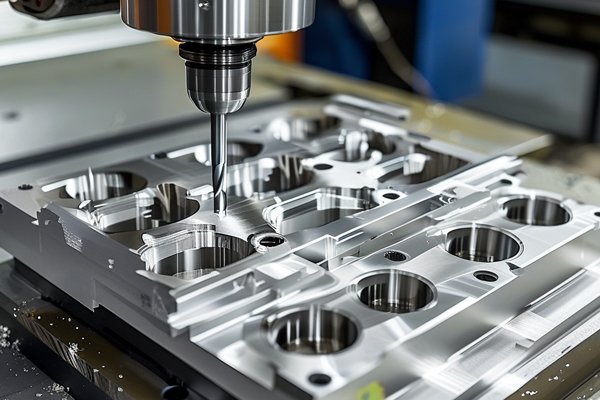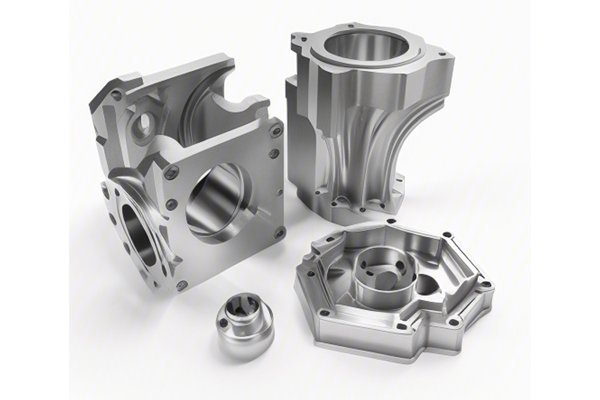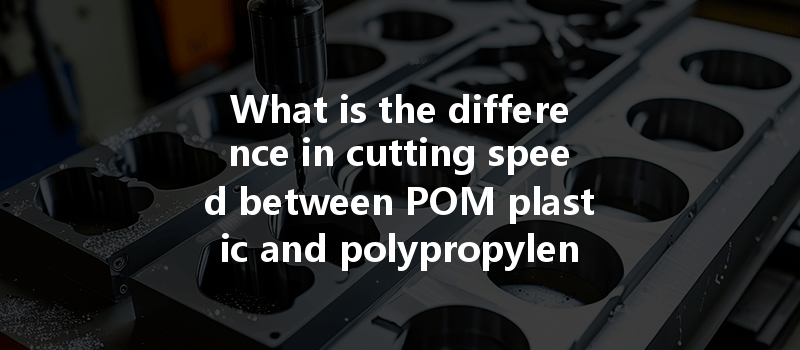In the rapidly evolving landscape of manufacturing, CNC machining has established itself as a cornerstone technology, enabling precise fabrication of a vast array of materials. Among the various materials utilized in CNC machining, two polymers frequently mentioned are Polyoxymethylene (POM) and Polypropylene (PP). These materials are each favored for their unique properties and specific applications. However, a crucial factor often overlooked in their machining processes is the difference in cutting speed. Understanding this distinction is vital for manufacturers seeking optimal efficiency and performance in their machining operations.
At YL Machining, we aim to provide valuable insights into this aspect of CNC machining, illustrating not only the technical differences between cutting speeds but also the implications for production practices. In this blog, we will delve into the characteristics of POM and PP, how their respective cutting speeds differ, and how these differences can impact practical applications in manufacturing.
Overview of POM Plastic and Polypropylene (PP)

What is POM Plastic?
POM, commonly referred to as acetal or by its trade names such as Delrin and Kepital, is an engineering thermoplastic known for its high stiffness, low friction, and excellent dimensional stability. It is a crystal-clear, high-performance polymer made through a process of polymerization of formaldehyde.
Properties of POM:

What is Polypropylene (PP)?
Polypropylene is a widely used thermoplastic polymer that is characterized by its lightweight and versatile properties. It is produced through the polymerization of propylene monomers, making it a cost-effective material suitable for various applications.
Properties of PP:
The Importance of Cutting Speed in CNC Machining
When discussing the efficiency of CNC machining processes for different materials, cutting speed is a critical parameter. Cutting speed not only influences the productivity of the machining operation but also affects the quality of the finished product and the lifespan of tooling used during the process.
Cutting Speed Defined:
Cutting speed (V) is defined as the speed at which the cutting tool moves across the workpiece surface. It is typically measured in meters per minute (m/min) or feet per minute (ft/min). Effective management of cutting speeds can lead to optimized performance and reduced costs in the manufacturing process.
Factors Influencing Cutting Speed
Several factors can impact cutting speed, including:

Cutting Speed Comparison between POM and PP
Characteristics of Machining POM
The machining of POM requires particular attention to cutting parameters due to the material’s properties.
Characteristics of Machining Polypropylene (PP)
On the other hand, machining polypropylene presents different challenges and advantages.
Implications of Cutting Speed Differences
Understanding the differences in cutting speeds for POM and PP has practical implications for machining operations:
For a manufacturer, employing the correct cutting speed can significantly impact machining efficiency. For example, POM’s higher cutting speed enables quicker production rates, beneficial for high-volume production scenarios. Conversely, the lower cutting speed for PP may lead to longer processing times, which needs to be factored into production schedules.
The difference in cutting speeds also affects tool wear and maintenance. Operating within the optimal ranges allows wear on cutting tools to be minimized. Operating POM at excessively high speeds could shorten tool life, while PP requires operators to be vigilant regarding heat management to avoid tool degradation.
The quality of the final product is influenced by cutting speeds. Higher cutting speeds may produce superior surface finishes in POM components; however, improper settings in PP machining could lead to issues such as warping or an incongruent finish. Consistency in the cutting speed for both materials is crucial to maintaining quality standards.
Optimizing cutting speeds impacts overall production costs. For POM, lower cycle times due to higher cutting speeds can lead to lower costs per part, while for PP, careful management of speeds can help minimize scrap and waste, enhancing cost efficiency.
In summary, the differences in cutting speeds between POM plastic and polypropylene (PP) reflect the intrinsic properties of these materials and have substantial implications on machining practices. POM allows for faster machining speeds, contributing to reduced cycle times and enhanced surface finishes, making it well-suited for precision applications. Meanwhile, PP’s properties necessitate more moderate cutting speeds to maintain tool life and component integrity.
At YL Machining, our commitment to efficiency and precision in CNC machining drives us to understand these nuances deeply. By optimizing cutting speeds according to material characteristics, we help our clients achieve their production goals while reaping the benefits of enhanced quality and efficiency in their manufacturing processes.
Whether you are looking to choose the right material for your application or seeking advice on optimizing your machining processes, YL Machining is here to support you with expert insights and solutions. Embrace the advantages that CNC machining offers and make informed decisions about your projects today!
—
This blog serves as a comprehensive overview of the differences in cutting speeds between POM and PP, tailored for manufacturers and engineers keen on optimizing their CNC machining practices. It encapsulates a wealth of information backed by current machining knowledge, underscoring how specific material characteristics can influence production methods.




